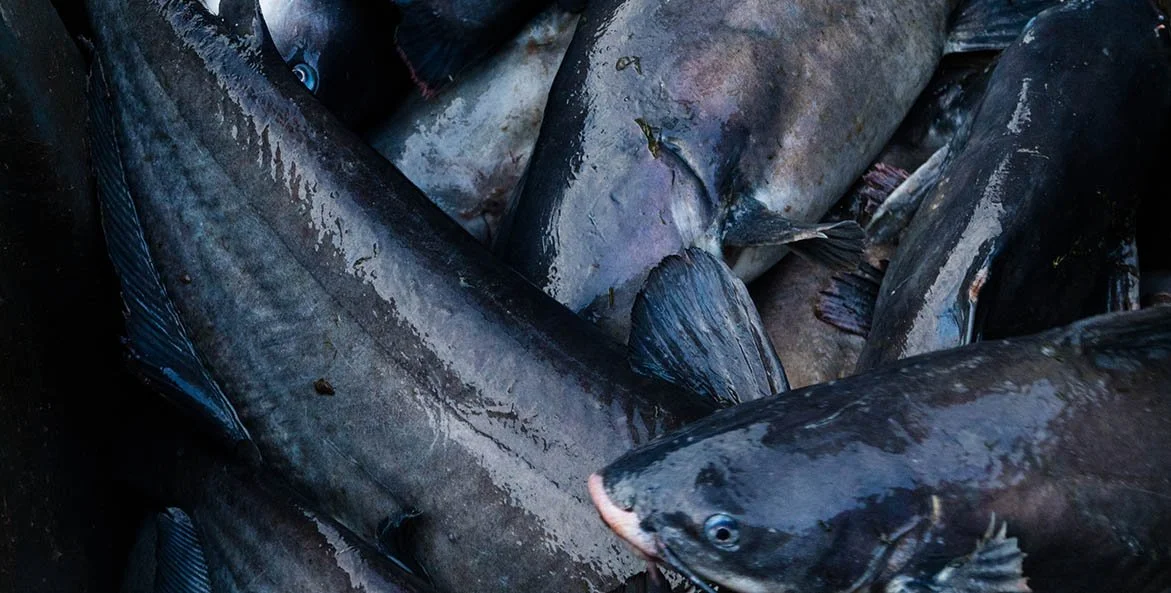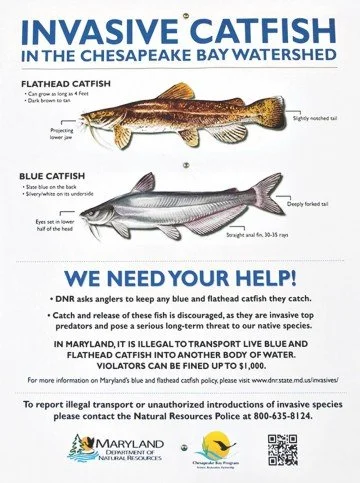We’ve been operating at the Meat and Poultry Processing Technical Assistance Program since March 2022. Describing our work as Meat and Poultry…and Catfish Technical Assistance may be more accurate.
About 20 years ago, when imported catfish-like products undercut domestic catfish producers, the sector successfully petitioned Congress to declare catfish as an Amenable Species. That brought catfish under USDA jurisdiction, and today it is still the only aquatic species processed under FSIS inspection.
That’s very relevant because of an ecological disaster unfolding in Chesapeake Bay and surrounding estuaries, as far south as Virginia.
The blue catfish, native to the Mississippi, Missouri, and Ohio River basins, was introduced in Virginia’s James, Rappahannock, and York rivers for recreational fishing. In the 1970’s. Recreational anglers loved it.
There were just a couple of teeny, tiny miscalculations with that plan.
Blue catfish are hardy and remarkably adaptive. They spread north and soon found their way into the Potomac and Chesapeake watersheds. They are predators, not bottom-feeders. Over the past 50 years, they have developed a particular appetite for blue crabs, striped perch, mollusks, and other native species.
Today, blue catfish account for the majority of biomass in Chesapeake Bay. Meanwhile, the blue crab population has fallen to the second-lowest level in recorded history.
Which brings us to the technical assistance program. In early 2024, several fishing enterprises along the East Coast began contacting Flower Hill Institute for technical assistance as they began developing processing infrastructure and marketing plans. The USDA Rural Development Agency has stepped in to help with a recently announced $6 million Meat and Poultry Processing Expansion Grant Opportunity. Applications for that grant are being accepted through October 6th.
This new MPPEP grant can help these enterprises expand their processing facilities and purchase the specialized equipment needed for catfish. State Departments of Agriculture in Maryland and Virginia are also helping with smaller grants and a comprehensive feasibility study on market potential for blue catfish.
Flower Hill Institute is helping to connect the enterprises with the grant opportunities, with experts in the food retail or foodservice sectors, and with pet product brands. Soon, many shoppers may be seeing more blue catfish items in their local grocery stores, and on restaurant menus. It’s a market-based solution to an ecological nightmare.
It’s unrealistic to expect that blue catfish can be eradicated from the watersheds along the Atlantic Coast. But the ingenuity and determination of these fishing enterprises, along with financial support from the USDA and technical assistance from the MPPTA network, can help mitigate the environmental damage and help restore the native species.



